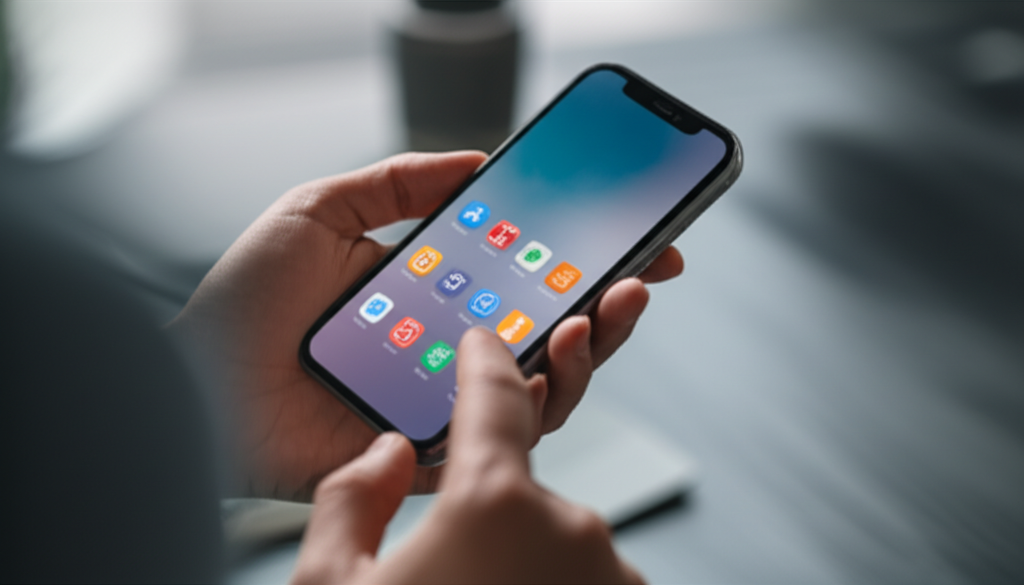The Silent Drain: How Smartphone Alerts May Be Eroding Your Focus
Unseen cognitive costs of constant digital interruptions revealed
In today’s hyper-connected world, the constant ping of a smartphone notification has become a ubiquitous sound. While these alerts aim to keep us informed and engaged, emerging research suggests they may be exacting a more significant toll on our cognitive abilities than commonly realized. A recent report from New Scientist highlights that even the mere presence of a notification, without direct interaction, can disrupt concentration and reduce task performance.
Understanding the Cognitive Distraction
The core of the issue lies in how our brains process interruptions. According to the article, a notification serves as a salient cue that demands attention. This demand can pull cognitive resources away from the primary task at hand, even if the individual consciously decides not to engage with the alert. This phenomenon is often described as a form of “attention residue,” where a portion of our mental focus remains tethered to the interrupted task, impairing subsequent performance.
The implications of this are far-reaching, particularly in environments where sustained concentration is crucial. This could include professional settings involving complex problem-solving, educational pursuits requiring deep learning, or even everyday activities like driving or engaging in meaningful conversations. The report cites studies indicating that these brief interruptions can lead to measurable declines in accuracy and efficiency.
The Psychological Pull of Notifications
Beyond the immediate cognitive impact, there’s a psychological element at play. Social media platforms and many other applications are designed to create a sense of urgency and reward, making their notifications particularly compelling. The anticipation of potentially important or engaging content can trigger a dopamine response, encouraging a habitual checking behavior. This creates a feedback loop where the brain is conditioned to respond to these cues, even when there is no genuine necessity to do so.
This constant availability and the design of these platforms can foster a state of perpetual partial attention. Rather than fully immersing oneself in a task, individuals may find their minds fragmenting, attempting to juggle multiple streams of information. This can lead to a feeling of being busy without necessarily being productive, and can contribute to mental fatigue over time.
Weighing the Benefits Against the Costs
It is important to acknowledge that smartphone notifications do serve valuable functions. For many, they are essential tools for communication, timely information delivery (such as emergency alerts or critical work updates), and staying connected with loved ones. The challenge, therefore, is not to eliminate notifications entirely, but to find a balance that maximizes their utility while minimizing their detrimental effects on focus and productivity.
The tradeoff often involves a potential gain in immediate awareness versus a loss in sustained concentration. For some professions or personal situations, the immediacy of certain alerts may outweigh the cost of a momentary distraction. However, for tasks requiring deep work or prolonged cognitive engagement, the cumulative impact of frequent interruptions could significantly impede progress and overall output.
Navigating the Digital Landscape for Better Focus
Given these findings, individuals may wish to consider strategies for managing their smartphone notifications more effectively. This could involve a critical review of which applications are permitted to send alerts and to what extent. Many smartphones offer granular control over notification settings, allowing users to disable non-essential alerts or customize their delivery. The article suggests that being more intentional about notification management could be a key step in reclaiming focused attention.
Furthermore, fostering an awareness of one’s own susceptibility to these distractions is crucial. Recognizing when a notification is pulling you away from a task and consciously making an effort to resist the urge to engage can, over time, help retrain cognitive habits. Setting specific times for checking messages or emails, rather than responding reactively to every alert, is another potential strategy.
Key Takeaways for Managing Digital Distractions
- Smartphone notifications can significantly disrupt concentration, even without direct engagement.
- The brain’s attention residue phenomenon means a part of focus remains on the interrupted task.
- App design often leverages psychological reward systems to encourage frequent checking.
- This can lead to a state of perpetual partial attention and mental fatigue.
- Balancing the utility of timely information against the cost of reduced focus is key.
- Managing notification settings and practicing intentional usage can help mitigate distractions.
Taking Control of Your Digital Environment
The modern smartphone is a powerful tool, but its constant stream of information demands conscious management. By understanding the cognitive impact of notifications and implementing proactive strategies, individuals can better protect their focus and enhance their productivity in an increasingly distracting digital world. The goal is to harness the benefits of connectivity without succumbing to its potential to fragment our attention.


























